Apple-Backed Plant in Arizona to Produce Sapphire
- Details
- Category: Tungsten & Sapphire Growth Furnace News
- Published on Monday, 26 May 2014 16:25
- Hits: 3150
Sapphire--it's not just for jewelry anymore. In the last few years, Apple has increased its use of the material in its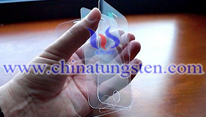 products, and that trend seems to be on the upswing. On Monday, Arizona governor Jan Brewer announced that Apple will open a manufacturing facility in Mesa; that plant will be operated by GT Advanced Technologies, which will be providing sapphire for Cupertino's products.
products, and that trend seems to be on the upswing. On Monday, Arizona governor Jan Brewer announced that Apple will open a manufacturing facility in Mesa; that plant will be operated by GT Advanced Technologies, which will be providing sapphire for Cupertino's products.
The plant will employ 700 workers and seems positioned to provide a lot of sapphire. Currently, Apple uses the material in relatively few places: It covers the lens on the iPhone 5c and 5s and is used as the top layer in the Touch ID sensor on the iPhone 5s. In both cases, it's harder and provides much more scratch resistance than conventional glass.
By investing in a facility designed for the production of sapphire, though, it seems possible that Apple's expecting to need more of the material than it would require simply to make lens covers. Daring Fireball's John Gruber speculates that Apple may actually plan to use the factory to produce sapphire glass displays for its devices; earlier this year, a report suggested that Apple had already begun to investigate the possibility, though doing so in the necessary volume had proved challenging.
The Arizona plant also moves Apple towards another one of its goals: bringing more manufacturing jobs back into the U.S. In the past, the company had come under fire for its heavy reliance upon overseas firms like China's Foxconn, which itself had been criticized for its lack of worker protections. Last December, Apple CEO Tim Cook announced that Apple would move some Mac production back into the United States; the revamped Mac Pro, which will be released later this year, is the first new Mac to be assembled domestically.
As with Apple's other recent facilities, such as its data centers in Oregon and South Carolina, the Arizona facility will rely on 100-percent renewable energy.
Tungsten Manufacturer & Supplier: Chinatungsten Online - http://www.chinatungsten.com
Tel.: 86 592 5129696; Fax: 86 592 5129797
Email: sales@chinatungsten.com
Tungsten & Molybdenum Information Bank: http://i.chinatungsten.com
Tungsten News & Tungsten Prices, 3G Version: http://3g.chinatungsten.com
Molybdenum News & Molybdenum Price: http://news.molybdenum.com.cn
Why Apple Bought $578M Worth Of Sapphire In Advance
- Details
- Category: Tungsten & Sapphire Growth Furnace News
- Published on Monday, 26 May 2014 16:00
- Hits: 3284
Apple is building a manufacturing plant in Arizona that will be used by GT Advanced Technologies to make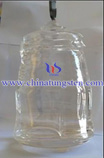 sapphire crystals for use in its products. Apple currently uses sapphire in its home buttons and camera lens covers, but several details about the material itself and the nature of its deal with GT indicate that it could be expanding its interests in the hard crystalline substance over the next several years.
sapphire crystals for use in its products. Apple currently uses sapphire in its home buttons and camera lens covers, but several details about the material itself and the nature of its deal with GT indicate that it could be expanding its interests in the hard crystalline substance over the next several years.
Sapphire, specifically synthetic, manufactured sapphire, has several properties that make it of interest to Apple. First of all, sapphire is superior to glass, even Corning’s Gorilla Glass material, in several ways. Synthetic sapphire has no color, as it’s a single crystal grown to be optically transparent — making it look very similar to glass. But it’s also extremely hard — 9 on the Mohs scale — which means better scratch resistance.
“Chemically strengthened glass can be excellent, but sapphire is better in terms of hardness, strength, and toughness,” says Matthew Hall, Director of the Center for Advanced Ceramic Technology at the Kazuo Inamori School of Engineering at Alfred University. “The fracture toughness of sapphire should be around 4 times greater than Gorilla Glass – about 3 MPa-m0.5 versus 0.7 MPa-m0.5, respectively.”
The hardness of sapphire will make it resistance to ‘flaw initiation’ (aka starting to scratch) and its ‘toughness’ is how it resists fracture once a flaw has begun (cracking altogether). This strength doesn’t come without a bit of cost, Hall notes. “The density of Gorilla Glass is 2.54 g/cm3 while sapphire is 3.98 g/cm3. Given equal-sized pieces, Gorilla Glass will always be lighter.”
The counter-point to the greater weight is that Apple could use thinner pieces of sapphire due to its greater strength overall. This would result in weight and thickness reduction, which is something Apple is very conscious about. You may have noticed that the latest iPad Air was reduced in thickness in part due to its use of thinner glass and IGZO display panels.
Sapphire has fairly good optical qualities, as well, says Hall. Both materials have roughly similar absorption properties, though sapphire’s refractive index is a bit higher, which would mean a tradeoff in light transmission for durability.
“Gorilla Glass is about 1.5 while sapphire is about 1.76 — the exact number is wavelength-dependent,” Hall says. “The reflection that occurs at an interface is directly proportional to the refractive index difference between the two media creating that interface.”
The technical details of GT Advanced’s sapphire product match up well with these numbers, you can read those here (pdf). This means that, in roughly the same amount of incident light, Gorilla Glass would allow for a brighter image than sapphire. The key difference between the two materials, and this is where we get to why Apple just ensured its own supply, is the manufacturability of sapphire vs. glass.
“The down draw process for making display glass is currently more scalable and energy-efficient than sapphire production,” Hall says. “I admit to being less familiar with the details of sapphire production, but it’s my understanding that all methods are batch-based while the relevant glass making process is continuous in nature. I don’t see an immediate solution for sapphire to compete with glass on economies of scale, but I would certainly be interested in learning what may be in the works.”
Hall says that there are questions about the methods of producing large amounts of thin sapphire that is not cost-prohibitive. Which may be why Apple is building a new facility which GT Advanced will inhabit, with its own machinery and processes. GT has been developing a method for making sapphire sheets thinner than a human hair, which are then laminated on top of glass material to protect it — a more cost-effective solution than a pure sapphire sheet.
A report earlier this week from Cantor Fitzgerald analyst Brian White noted that sapphire glass accounted for about 11 percent of GT’s sales this year — around $28.9 million in revenue. In 2014, GT expects to make between $480 million and $640 million from its sapphire business alone. So clearly it expects Apple’s additional business to increase its production quite a bit.
What chunk of that increased revenue will be sucked up by Apple? The answer lies in GT’s Q3 release, which notes that Apple will provide it with a $578 million prepayment, which GT will reimburse over the next five years. Apple’s deal length wasn’t mentioned, but it’s likely to last at least those five years. Note that this is only the pre-payment, Apple’s investment in sapphire may go well beyond that.
In its statement about the deal, GT said that it “has accelerated the development of its next-generation, large-capacity ASF furnaces to deliver low-cost, high-volume manufacturing of sapphire material.”
This increased volume indicates significant interest by Apple, for both its current products and future ones. A few months back, there were reports that production volume of sapphire materials was a ‘problem,’ which we’ve confirmed were accurate.
An MIT Technology Review piece from March of this year noted that production levels were one of the biggest barriers to sapphire being used in smartphone screens. At current volumes, sapphire was just too expensive. At the time, GT said that a sapphire display could cost 3-4x as much as a Gorilla Glass one, but people at the company noted that its prices would fall further as GT “improved the quality of its furnaces and as the manufacturers that purchase those furnaces streamline operations.”
Though Apple currently uses sapphire for its touch sensors, GT’s increased output in 2014 points to a much larger role for the material in Apple’s business. This could point to Apple beginning to use sapphire for the screens of its devices. Though there are production challenges, it’s technically possible that Apple has found a way to make it economically feasible to replace the glass material that they’re using with sapphire.
In supply chain analyst circles there is chatter that Apple no longer uses Corning’s Gorilla Glass for its iPhone screens, and hasn’t for some time now. But it still makes them out of glass. Expanding sapphire production and buying its own plant indicate a massive interest in the crystalline material by Apple.
“First, this material must be extremely strategic, says Creative Strategies Analyst and Techpinions columnist Ben Bajarin. “It is necessary for Touch ID because it is extremely scratch-resistant. If a scratch got on your thumb scanner it wouldn’t work. So then the question becomes what else may they want or need to use a scratch resistant screen for. This is where the wearables idea or watch comes in.”
There has been a lot of chatter about Apple and wearables, and it is indeed working on something in that arena. Apple’s M7 motion coprocessor likely has something to do with it, and there are some indications that it’s being worked on by both Bob Mansfield and ex-Adobe CTO Kevin Lynch.
Watches, a popular wrist-mounted wearable you may have heard of, often use sapphire for their face covers because of their durability. They simply get knocked around more than phones do.
“This, for now, is more about smaller screens than bigger. But perhaps it is also a learning process or investment for them to take this to other screens,” says Bajarin.
This is how Apple operates with its suppliers in China like Foxconn. If custom machinery or processes are needed for their products, they often put the money into the deal for those. It’s not disclosed in GT’s deal, but there may be a possibility that it’s helping it build the furnaces that it needs. It’s certainly building a fancy new facility for the manufacturing, complete with a renewable energy source in the form of a solar farm.
Apple’s investment in sapphire glass displays just how important it views the material. This could also mean that it is setting itself up to protect the supply of material over the course of the next few years. Apple has often done this with components like Retina displays.
Around the time HP was trying to build its TouchPad tablet, we had heard that the company was frustrated because Apple had locked up super high-res display production for some time. HP couldn’t get the panels even if it wanted to, and would have to wait until Apple’s exclusivity deals ran out. This may be a similar scenario, where Apple buys out capacity to prevent others from having access to it.
Or it could simply be a matter of building up production levels to where Apple needs them to be just to provide it for themselves. This is probably the likelier scenario, especially given the relative scarcity of sapphire and the production processes used to make it in enough volume. Especially if Apple expands production of its sapphire home buttons and TouchID systems to the iPad line in the coming year.
Either way, Apple is planning on using sapphire on a much larger scale than it has previously. There’s no telling exactly when we’ll see the fruits of this increased production, but GT’s increased production levels point to a much bigger use of sapphire by Apple in 2014 and beyond.
Tungsten Manufacturer & Supplier: Chinatungsten Online - http://www.chinatungsten.com
Tel.: 86 592 5129696; Fax: 86 592 5129797
Email: sales@chinatungsten.com
Tungsten & Molybdenum Information Bank: http://i.chinatungsten.com
Tungsten News & Tungsten Prices, 3G Version: http://3g.chinatungsten.com
Molybdenum News & Molybdenum Price: http://news.molybdenum.com.cn
LED Lighting Market Is Growing Rapidly Replacing Traditional Lighting Around The Corner
- Details
- Category: Tungsten & Sapphire Growth Furnace News
- Published on Friday, 23 May 2014 14:30
- Hits: 3137
Moment , LED lighting products are slowly replacing traditional lighting position in the same proportion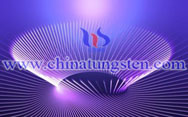 increases every year . According to market research data show that China's LED lighting market in 2008 was 9.061 billion yuan of output value , output value of 48.888 billion yuan in 2013 , an increase of 48 percent in 2008 . China Indoor LED lighting products increased from 012 million yuan worth to 2013 of 9.82 billion yuan , an increase of 90%. This growth rate represents not only the booming LED industry, but also on behalf of the status of the traditional lighting of the already precarious . LED has been accepted by more and more consumers and needs .
increases every year . According to market research data show that China's LED lighting market in 2008 was 9.061 billion yuan of output value , output value of 48.888 billion yuan in 2013 , an increase of 48 percent in 2008 . China Indoor LED lighting products increased from 012 million yuan worth to 2013 of 9.82 billion yuan , an increase of 90%. This growth rate represents not only the booming LED industry, but also on behalf of the status of the traditional lighting of the already precarious . LED has been accepted by more and more consumers and needs .
With the gradual expansion of the overall semiconductor market size extension , indoor lighting products are also in the overall semiconductor market is a large proportion , intelligent lighting products also account for a certain percentage. The development and application of high-tech and high demands on the quality of people's lives continue to promote the development of intelligent lighting applications , will continue to penetrate into the LED home lighting . At present, the country such as Shenzhen , Shanghai , Nanjing and other cities already in the promotion and popularization of the use of intelligent home products, and small and medium sized cities in intelligent lighting penetration is generally not high . However, intelligent lighting applications humane, comfortable , technology , etc. are also popular, combined with LED lighting products fiery , intelligent control will open a new era of home lighting .
Tungsten Manufacturer & Supplier: Chinatungsten Online - http://www.chinatungsten.com
Tel.: 86 592 5129696; Fax: 86 592 5129797
Email: sales@chinatungsten.com
Tungsten & Molybdenum Information Bank: http://i.chinatungsten.com
Tungsten News & Tungsten Prices, 3G Version: http://3g.chinatungsten.com
Molybdenum News & Molybdenum Price: http://news.molybdenum.com.cn
LED Lighting Is Undergoing A Major Transformation of The Intelligent Connection Can Become A New Selling Point
- Details
- Category: Tungsten & Sapphire Growth Furnace News
- Published on Friday, 23 May 2014 14:23
- Hits: 3163
In the mobile Internet era, even the bulbs are eager for the ancient lighting industry must find their own sense of presence in them. 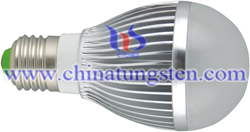
Biennial Frankfurt International Lighting Fair is considered to be a professional lighting show the world's most influential. LED lights have become the show's most important product. Because the energy-efficient LED lights and obtained a huge market success and is considered the best alternative to the incandescent lamp, is also considered a revolution in the industry for the first time since the invention of the incandescent lamp.
Tungsten Manufacturer & Supplier: Chinatungsten Online - http://www.chinatungsten.com
Tel.: 86 592 5129696; Fax: 86 592 5129797
Email: sales@chinatungsten.com
Tungsten & Molybdenum Information Bank: http://i.chinatungsten.com
Tungsten News & Tungsten Prices, 3G Version: http://3g.chinatungsten.com
Molybdenum News & Molybdenum Price: http://news.molybdenum.com.cn
Apple Just Procured Enough Sapphire Crystal Furnaces to Make 100-200M ~5-inch IPhone Displays in Arizona
- Details
- Category: Tungsten & Sapphire Growth Furnace News
- Published on Thursday, 22 May 2014 15:14
- Hits: 3275
Last year, Apple and GT Advanced struck a deal to open and operate a manufacturing facility in Mesa, Arizona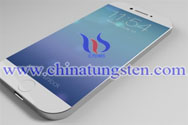 related to sapphire crystal components.
related to sapphire crystal components.
Earlier this year, we learned that Apple is “aggressively” pushing to make the facility operational by February 2014 and that the building would produce a “critical” and “new” sub-component for future Apple devices. Due to the vagueness and secrecy surrounding Apple and GT Advanced’s plans, there has been little to no confirmation regarding what exactly the partnership will yield for future Apple products.
But, thanks to new documents and information that we have uncovered with help of analyst Matt Margolis, we have a clearer picture of Apple’s plans…
As we speculated in a previous article, it appears that Apple is planning to build sapphire-crystal displays for future iPhones. This is opposed to this facility building sapphire components for future Apple Touch ID fingerprint readers and caps for camera sensors. The proof that GT Advanced is preparing to manufacture sapphire for displays comes from import/export records. As can be seen in the image above, GT Advanced has ordered Intego Sirius Sapphire Display Inspection Tool components.
The machines will allow GT Advanced to ensure that the sapphire crystal displays meet high-quality standards. These machines are specific for display-grade components, not small pieces of sapphire that could be used for Home buttons or cameras.
The machines are large and can process several slabs of sapphire crystal screen covers simultaneously. Above is a drawing of the equipment.
Because GT Advanced is not owned by Apple, it may be unclear if every component purchase by GT Advanced is for Apple-related purposes. Of course, GT Advanced has had several partners in the past. However, information from a recent GT Advanced SEC filing seems to point to all current work being exclusive for Apple-related uses:
Based on the above details from the SEC filing, Apple and GT Advanced are currently in an exclusive partnership in relation to “Consumer Electronics Products,” and this makes it unlikely that the new sapphire crystal display work could be for any other technology company’s products.
Besides the sapphire crystal display testing tools, GT Advanced has ordered several other components throughout the past few months. Most importantly, several furnaces and chambers. The sapphire furnace and chamber system is pictured above. The silver-colored metal drum is the chamber, and the entire machine makes up a completed furnace.
Both pieces work together to transform sapphire crystal material into “boules” that look like large hockey pucks. Those “boules” are then re-processed, polished, and sliced into the shapes of displays.
As of now, according to shipping documents and other data from Margolis, GT Advanced has received 518 of the pictured units, with another 420 machines on order (that have yet to be assembled). The first 518 units, according to Margolis, could build between 103 million and 116 million ~5-inch displays per year. The additional machines would nearly double that annual output with an additional 84 million to 94 million screen covers. GT Advanced has also ordered over 100 tons of graphite material to heat the furnaces.
As we’ve previously noted, sapphire crystal displays would make the iPhone’s screen much stronger and scratch resistant. The new screen could be a headline feature of the next iPhone model, which is expected to see a larger screen along with curved glass edges. We’re currently investigating some other developments regarding Apple’s plans for the Mesa, Arizona manufacturing plant, so stay tuned.
Tungsten Manufacturer & Supplier: Chinatungsten Online - http://www.chinatungsten.com
Tel.: 86 592 5129696; Fax: 86 592 5129797
Email: sales@chinatungsten.com
Tungsten & Molybdenum Information Bank: http://i.chinatungsten.com
Tungsten News & Tungsten Prices, 3G Version: http://3g.chinatungsten.com
Molybdenum News & Molybdenum Price: http://news.molybdenum.com.cn
LED Lighting Will Remain Strong in The Coming Years The Outbreak of Rapid Growth
- Details
- Category: Tungsten & Sapphire Growth Furnace News
- Published on Thursday, 22 May 2014 15:05
- Hits: 3148
Over the past three decades , the formation of the global output and 15 billion trillion or so lampholder stock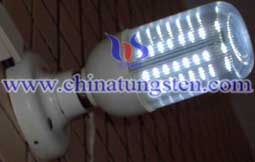 market ; Our lighting industry output in 2013 reached 4800 billion. With LED lighting to improve penetration in the lighting industry , LED lighting and intelligent control period to replace the traditional lighting of the advent of China's LED lighting industry will maintain rapid growth of the state in the coming years .
market ; Our lighting industry output in 2013 reached 4800 billion. With LED lighting to improve penetration in the lighting industry , LED lighting and intelligent control period to replace the traditional lighting of the advent of China's LED lighting industry will maintain rapid growth of the state in the coming years .
Relevant survey report shows that the rapid development of China's LED lighting is still sustainable three to five years. 2013 China's lighting industry output value of 480 billion yuan , including $ 35 billion in export volumes and more than 2000 billion domestic market. 200 billion yuan in 2013 relative to the domestic market , the stock market over the past three decades lighting formed larger. 2012 LED lighting in the lighting industry 's penetration rate of 10% , in 2013 this proportion rises to 17% ; 2014 are more likely to rise to around 40%. The next three to five years are large-scale LED lighting market replacement cycle , which is mainly the introduction of appropriate national energy policy guidance due.
While the pattern of change in the industry , the global LED lighting products prices are starting to show "no white " effect. By the upstream chip technology to enhance the impact of the rapid decline and prices , the price gap between LED lighting and traditional lighting products are gradually narrowing between the upstream and downstream LED lighting products prices has become an indisputable fact. Currently, the price of LED lighting products is growing at an annual rate of approximately 20% decline in many areas of both the LED bulb to replace 40W or 60W minimum price has been below $ 10 even , gradually approaching the price of traditional energy-saving lamps .
Impact of LED product prices, pushing prices there are two main factors aspects: one is to enhance the technology makes LED production costs to decline. In recent years , LED upstream chips huge investment , the current chip prices have dropped 30 percent in 2010 ; same time, new technologies emerging industries and enterprises to become the face of price pressures coming LED powerful weapon . On the other hand , due to the enormous prospects of LED lighting has attracted numerous influx of capital , the market competition is becoming increasingly fierce competition makes the price cuts have become an important means of LED enterprises.
Related research institutions that , thanks to the gradual decline of the middle reaches of the price advantage to the 2014 global LED lighting product price still fell space is expected from 2013 to 2014 China LED indoor lighting products prices fell an average of about 20%, LED lighting market is expected to usher in a new round of strong eruptions.
In the 11th general lighting LED driver and intelligent control technology seminars , IHS senior analyst at the internationally renowned analyst Alice Tao participants who will analyze the development trend of global lighting market , the interpretation of the global lighting market. The seminar organized by the big bits of information , the semiconductor device applications network contractor , will be held at the Westin Ningbo May 30 .
Tungsten Manufacturer & Supplier: Chinatungsten Online - http://www.chinatungsten.com
Tel.: 86 592 5129696; Fax: 86 592 5129797
Email: sales@chinatungsten.com
Tungsten & Molybdenum Information Bank: http://i.chinatungsten.com
Tungsten News & Tungsten Prices, 3G Version: http://3g.chinatungsten.com
Molybdenum News & Molybdenum Price: http://news.molybdenum.com.cn
Apple Already Uses Sapphire in The IPhone 5S for The Camera Lens And The Home button
- Details
- Category: Tungsten & Sapphire Growth Furnace News
- Published on Wednesday, 21 May 2014 15:29
- Hits: 3236
The idea that it may be used in the next iPhone screen elicited a strong response from Corning’s Senior VP, 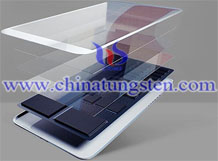 Tony Tripeny at a Morgan Stanley conference last week.
Tony Tripeny at a Morgan Stanley conference last week.
When we look at it, we see a lot of disadvantages of sapphire versus Gorilla Glass,” said Tripeny. “It’s about 10 times more expensive. It’s about 1.6 times heavier. It’s environmentally unfriendly. It takes about 100 times more energy to generate a Sapphire crystal than it does glass. It transmits less light which … means either dimmer devices or shorter battery life. It continues to break. I think while it’s a scratch resistant product it still breaks…”
More molybdenum product: http://www.molybdenum.com.cn
Tel: 0592-5129696 Fax:0592-5129797
E-mail: sales@chinatungsten.com
Tungsten & Molybdenum Information Bank: http://i.chinatungsten.com
Tungsten News & Tungsten Prices, 3G Version: http://3g.chinatungsten.com
Tungsten News & Tungsten Price: http://www.chinatungsten.com
LED Backlight Design Competition Project Matured Complicated
- Details
- Category: Tungsten & Sapphire Growth Furnace News
- Published on Wednesday, 21 May 2014 14:50
- Hits: 3218
70% for manufacturing a rare metal , indium , indium tin oxide target (ITO), ITO for manufacturing a liquid crystal display (LCD), thus manufacturing a liquid crystal display Indium (LCD) of the 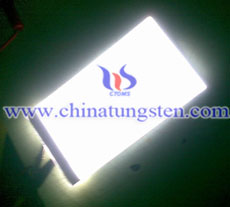 important material. LCD TV panels accounted for more than half of the overall cost is a major factor affecting the cost of LCD TV 's , LCD TV panels accounted for more than half of the overall cost is a major factor affecting the cost of LCD TVs , but also smart phones, tablet PCs , automotive displays the main component. High-generation production line mainly produces 32-inch large-size LCD panel, generally defined as more than six-generation line , called high- generation line , high-generation line.
important material. LCD TV panels accounted for more than half of the overall cost is a major factor affecting the cost of LCD TV 's , LCD TV panels accounted for more than half of the overall cost is a major factor affecting the cost of LCD TVs , but also smart phones, tablet PCs , automotive displays the main component. High-generation production line mainly produces 32-inch large-size LCD panel, generally defined as more than six-generation line , called high- generation line , high-generation line.
Market research firm NPDDisplaySearch noted that in 2014 the LED industry is basically going to be a good year , the main reason is that , LED backlight market demand for flat demand , but the lighting market demand continues to heat up ; together with vendors for new MOCVD careful assessment of the device, resulting in supply since 2014 after gradually reach a stable level of demand .
But NPDDisplaySearch also pointed out that because of the lighting market specifications confusion and lower barriers to entry , the entire lighting market demand becomes a small variety of forms, less favorable for large-scale enterprises , the big companies are taking a single specification in the lighting and fixed gross rate business model ; while in the case of LED backlighting applications , can be found in LED notebook (Notebook) backlighting applications has reached 100%, while the monitor (Monitor) is almost 100%.
And TV from 2011 to the beginning of the backlight LED, just three years LEDTV penetration has reached 99% , more developed the so-called direct type backlight , backlight design to the fullest , but also led to the new supply chain , for example : BMS (BacklightModuleSystem), direct type LED light source , optical lens and the second direct type backlight of playing pieces ; while some of the original because there is no backlight module manufacturers to keep up with this wave of backlight design changes have been eliminated.
It can be said when the flat panel display backlight design matured, not just purely technical and service competition each company , more than is whether the size of the company and the group's supply chain can meet ; project because the more competition for more , resulting in the flat panel display industry continues to reshuffle the backlight , the bigger the trend has become more evident .
Although the overall LED backlight market did not change much , but the economies of scale and technological capabilities erected a wall , so latecomers can not be entered , but not like a negative gross margin of lighting applications happen, and as the whole plant or the system works as TV prices increasing pressure , the integration efforts will become increasingly large , continuous compression of the small plants living space, we can see that since the direct type backlight module concept began in 2011 to replace the traditional the CCFL backlight, the thickness of the main principles of sacrifice and get a better cost advantage, but as technology advances more and more , as thin when the thickness has been only need to sacrifice some or thickness and side- backlight time, advantages and other advantages of the direct type backlight module cost ─ ─ on the ease of doing such a narrow frame , suitable for localdimming ─ ─ will gradually erode the side- 's high-end models , the main idea is they can without sacrificing thickness reduce costs.
All the advantages of making direct type backlight penetration increased from 45.9% in 2013 to 53.9% in 2014 , and annual growth of approximately 17.1% compared to 2013 ; Outlook 2017 , direct- penetration is estimated to be 61.3% . But there will be any technical bottlenecks, whether direct type backlight design to achieve a balance between performance and price , mainly depends on whether the secondary optical design to the limit ; addition to the direct type backlight design in the end how much OpticalDistance (OD) for the mainstream ? Whether wide gamut era came ? Are worth exploring themes.
NPDDisplaySearch also said demand for small- size backlight , backlight how existing thinning is the main design focus ; while the merits of the backlight module designed for handheld devices has a great impact on the use of time . Also the rise of high-resolution display , the backlight or backlight design also affect different panel backlight penetration will be different for the next variable encountered backlight design will be more complex.
Tungsten Manufacturer & Supplier: Chinatungsten Online - http://www.chinatungsten.com
Tel.: 86 592 5129696; Fax: 86 592 5129797
Email: sales@chinatungsten.com
Tungsten & Molybdenum Information Bank: http://i.chinatungsten.com
Tungsten News & Tungsten Prices, 3G Version: http://3g.chinatungsten.com
Molybdenum News & Molybdenum Price: http://news.molybdenum.com.cn
Sapphire Glass
- Details
- Category: Tungsten & Sapphire Growth Furnace News
- Published on Friday, 16 May 2014 14:07
- Hits: 3144
Sapphire glass was in the news again today, thanks to a jump in the share price of GT Advanced Technologies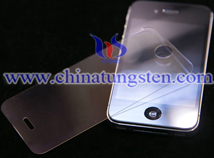 Inc. — the company which will reportedly manufacture the iPhone 6’s sapphire display.
Inc. — the company which will reportedly manufacture the iPhone 6’s sapphire display.
With contrasting reports about sapphire’s advantages over Gorilla Glass, along with counter-reports from Gorilla Glass maker Corning, we figured the time was right to break down some of the questions about Apple’s latest wonder-material.
Currently used by Apple only in small quantities in the protective glass over the iPhone 5s camera sensor, and Touch ID home button, analysts predict that worldwide demand for sapphire glass is about to pick up in a big way.
Apple announced late in 2013 that it was planning to open a sapphire glass manufacturing facility in Arizona — employing 700 people, and capable of churning out between 100 million and 200 million iPhone displays each year. GT Advanced Technologies will own and operate the required furnaces and equipment, for what is rumored to be the screens for the forthcoming iPhone 6, but may turn out also to refer to Apple’s iWatch.
To find out more about sapphire glass — including its legendary toughness — Cult of Mac spoke with aerospace company Aero-Gear, who manufacture a sapphire crystal iPhone screen protector of their own.
Tungsten Manufacturer & Supplier: Chinatungsten Online - http://www.chinatungsten.com
Tel.: 86 592 5129696; Fax: 86 592 5129797
Email: sales@chinatungsten.com
Tungsten & Molybdenum Information Bank: http://i.chinatungsten.com
Tungsten News & Tungsten Prices, 3G Version: http://3g.chinatungsten.com
Molybdenum News & Molybdenum Price: http://news.molybdenum.com.cn
LED Market Demand for The Full Flowering Growth Will Exceed 30%
- Details
- Category: Tungsten & Sapphire Growth Furnace News
- Published on Friday, 16 May 2014 11:11
- Hits: 1634
LED lighting LED is Ⅲ - Ⅳ made compounds, such as gallium arsenide, gallium phosphide, gallium arsenide and other semiconductor phosphorus, which is the use of solid semiconductor chip as hair light materials. Rare metal gallium in the modern semiconductor industry widely used, mainly in the compound gallium arsenide occurs, accounting for about 80% of total applications, gallium, gallium arsenide is mainly used in 3G mobile phones, wireless communications and semiconductor LED lighting on.
and other semiconductor phosphorus, which is the use of solid semiconductor chip as hair light materials. Rare metal gallium in the modern semiconductor industry widely used, mainly in the compound gallium arsenide occurs, accounting for about 80% of total applications, gallium, gallium arsenide is mainly used in 3G mobile phones, wireless communications and semiconductor LED lighting on.
Recently, LED industry from the chip to the package plants are in short supply situation, the industry is also widely expected May sales will be better. Insiders expect the LED lighting market with the launch of the annual LED market demand will have more than 30% growth in the first half of the new LED chip industry in less than 10% capacity, supply and demand conditions in the second half of the LED chip industry will become more balance even tighter.
Tungsten Manufacturer & Supplier: Chinatungsten Online - http://www.chinatungsten.com
Tel.: 86 592 5129696; Fax: 86 592 5129797
Email: sales@chinatungsten.com
Tungsten & Molybdenum Information Bank: http://i.chinatungsten.com
Tungsten News & Tungsten Prices, 3G Version: http://3g.chinatungsten.com
Molybdenum News & Molybdenum Price: http://news.molybdenum.com.cn




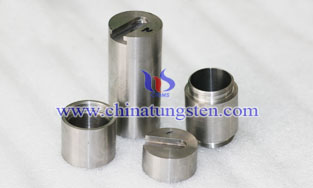


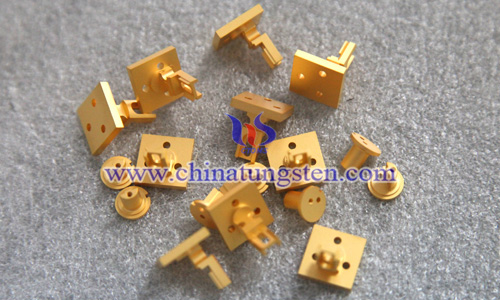

 sales@chinatungsten.com
sales@chinatungsten.com